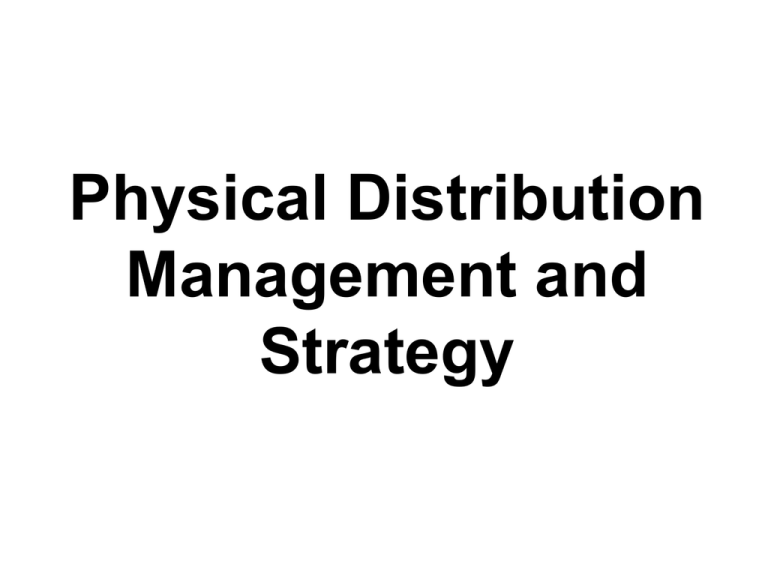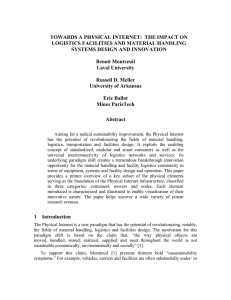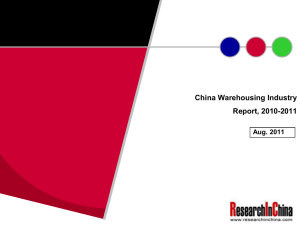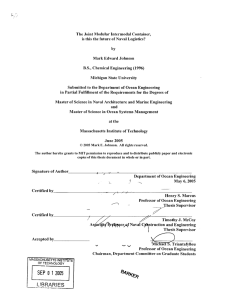Physical Distribution
advertisement

Physical Distribution Management and Strategy Physical Distribution • The process of – planning, implementing, and controlling – the efficient, effective flow and storage – of goods, services, and related information – from point of origin to point of consumption – for the purpose of conforming to customer's requirements. • Physical distribution cost can represent 20% or more of the selling price of a product. Logistics Management • The efficient management of the flow of materials inbound-through and outbound of an organization. • Two primary product flows: – Physical supply (materials management): Flows that provide raw materials, components, and supplies to the production process. – Physical distribution management: Flows that deliver the completed product to customers and channel intermediaries. Materials management Supplier Physical distribution management Customer Manufacturer Inbound Logistics Outbound Logistics Logistics Management Study Area Map Supply chain management (a series of connected logistics flows) Logistics management Materials management Physical distribution Incoming transportation Receiving Purchasing Incoming warehousing Inventory control Traffic management Shipping Customer service Finished goods Functions of Traffic Management • • • • Mode and carrier selection Routing Claims processing Operation of private transportation Many of the imported goods you purchase were shipped in 20-foot (TEU) or 40-foot (FEU) steel containers Large cranes load the containers onto ships. (Image courtesy of the Port of Charleston) Larger container ships can hold 4,000 to 6,000 containers. (Image courtesy of Maersk Sealand) After unloading from ships, containers can be loaded onto a flatbed rail car, or truck flatbed, for additional intermodal shipping. (Image courtesy of CSX Corp.) Alternatively, a container can be attached to a set of wheels for motor transport (as an 18-wheeler trailer). Major Advantages by Transportation Mode • Motor – Speed of delivery – Diversity of equipment – Flexibility – Frequency of movement – Transfer of goods to other carriers – Convenient to both shipper and receiver • Rail – Mass movement of goods – Low unit cost of movement – Dependability – Long-haul moving – Wide coverage to major markets and suppliers – Many auxillary services (i.e., switching) – Transfer of goods to other carriers – Specialized equipment • Water – Very low unit cost of movement – Movement of low-unit-value commodities – Long-haul movement – Mass movement of bulk commodities (continued) Major Advantages by Transportation Mode • Pipeline – Lowest unit cost of movement – Mass movement of liquid or gas products – Long-haul moving – Large capacity – Most dependable mode • Air – Frequent service to major markets – Large capability – Overnight service – Most rapid speed of any carrier • Intermodal – Cost savings – Lower loss and damage claims due to containerization – Service extended to more shippers and receivers – Reduced handling and storage costs Controllable Elements in a Logistics System • • • • • • • • • • Customer service Logistics communications Warehousing Packaging Production planning Order processing Transportation Inventory control Materials Handling Plant and warehouse location










